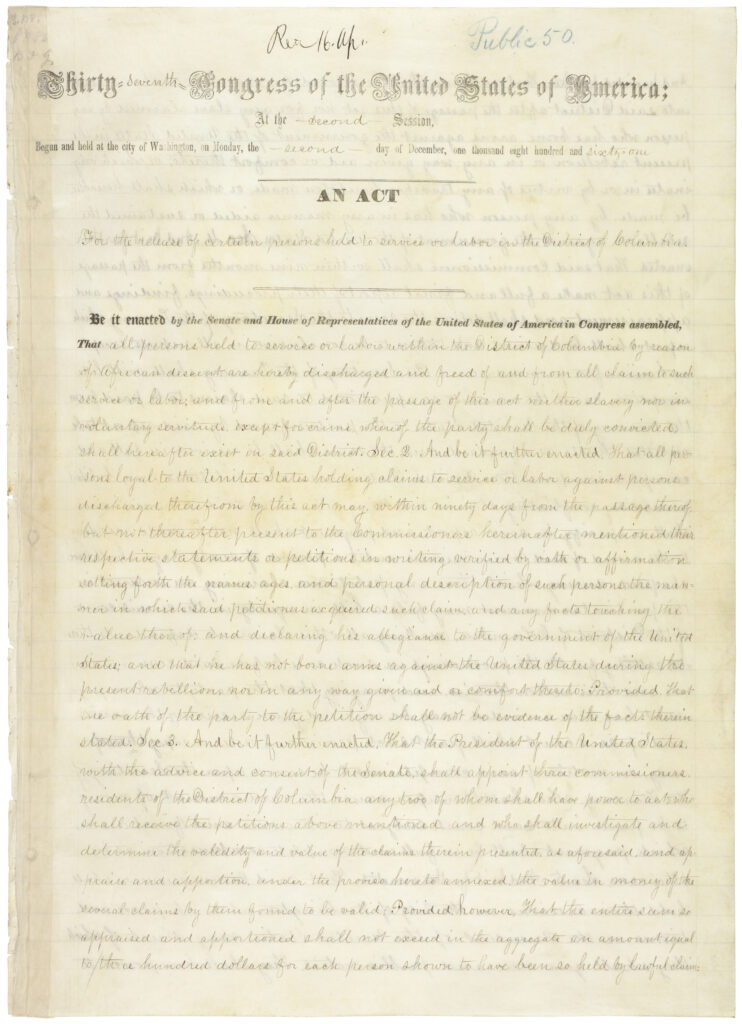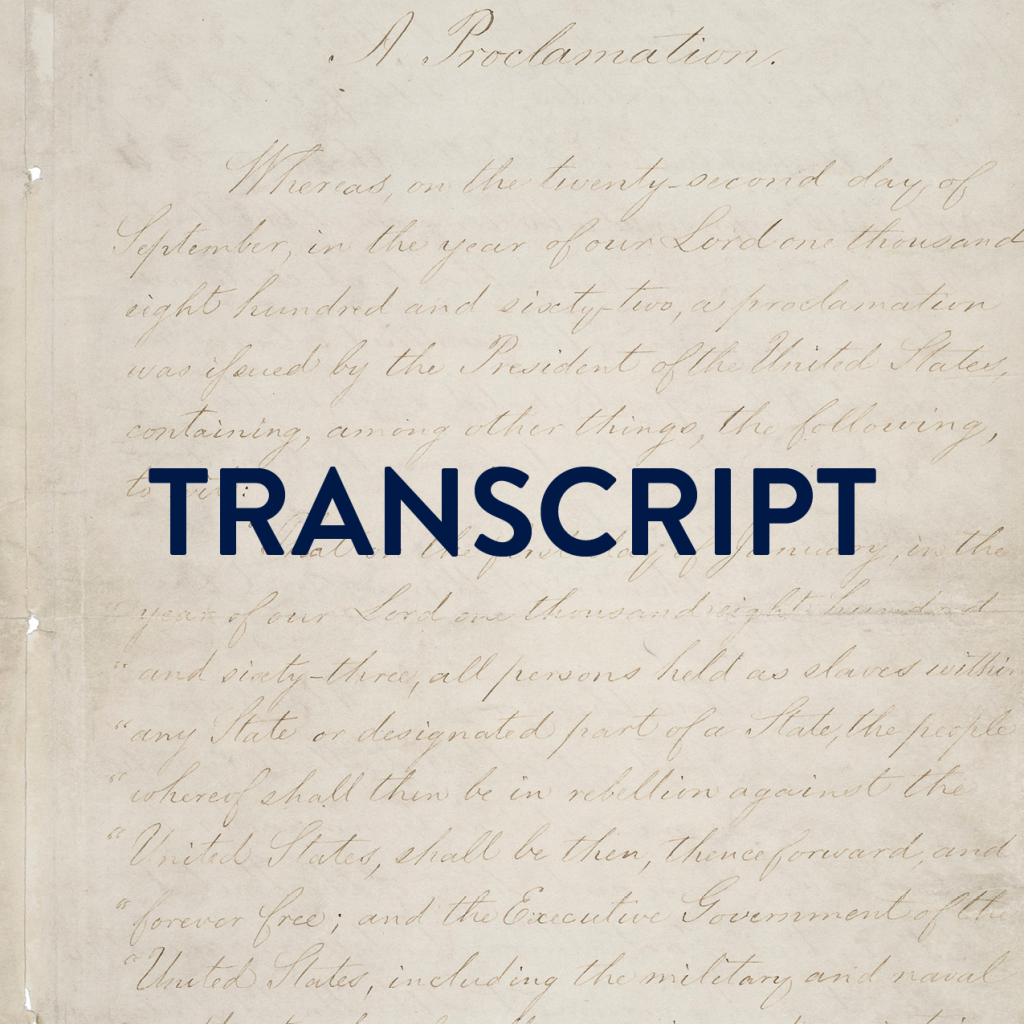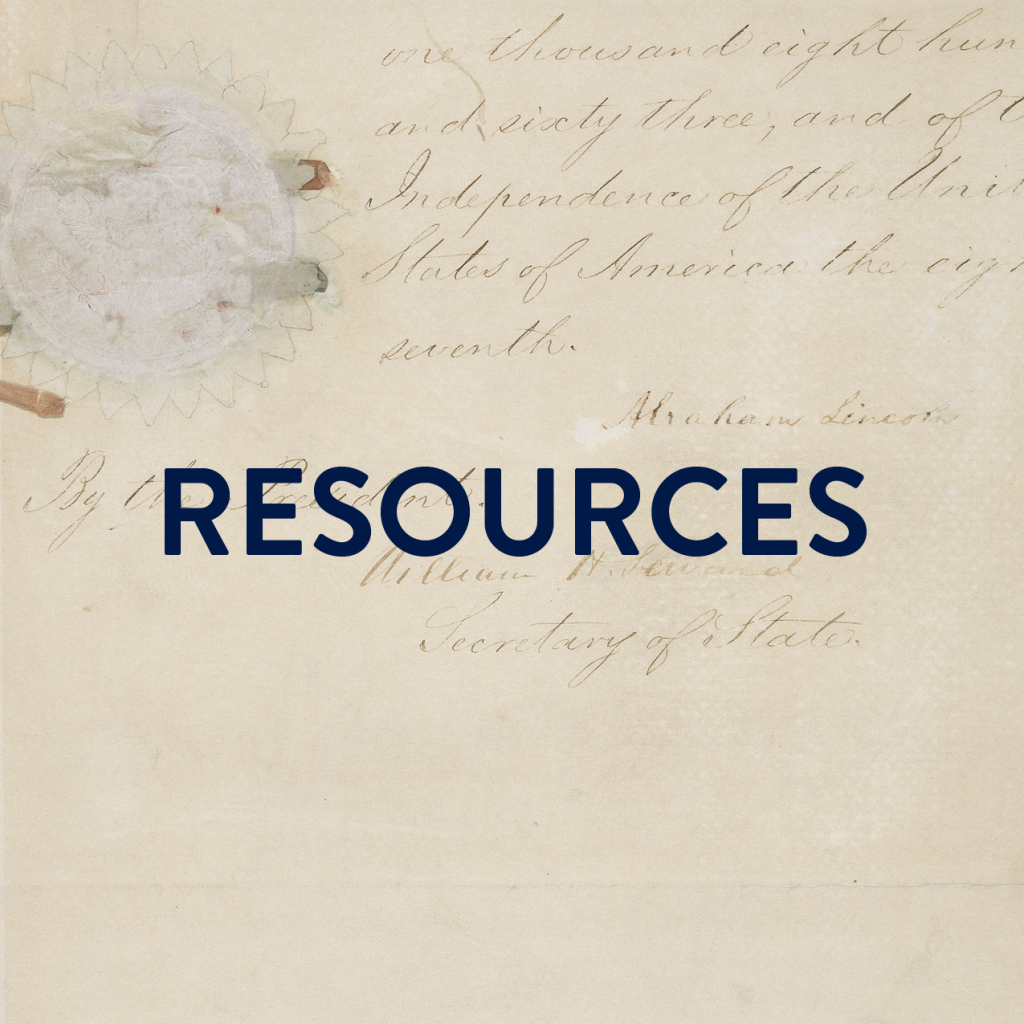Through the generous support of The Boeing Company, the Emancipation Proclamation and General Order No. 3 will be on display at the National Archives from Thursday, June 19 to Sunday, June 22, 2025 during normal museum hours. The museum is open daily from 10 a.m. – 5:30 p.m. EST.
When President Abraham Lincoln signed the Emancipation Proclamation on January 1, 1863, he said, “I never in my life, felt more certain that I was doing right than I do in signing this paper. . . . If my name ever goes into history it will be for this act, and my whole soul is in it.” The document proclaimed that enslaved people held in areas still in rebellion “are and henceforward shall be free.” By the end of the war, nearly 200,000 Black soldiers and sailors had fought for the Union and freedom.
Although the Emancipation Proclamation did not end slavery in the nation, it captured the hearts and imaginations of millions of Americans and fundamentally transformed the character of the war. As a milestone along the road to slavery’s final destruction, the Emancipation Proclamation has assumed a place among the great documents of human freedom.
View the Emancipation Proclamation in the National Archives Catalog here.
Juneteenth
On June 19, 1865, two and a half years after President Abraham Lincoln’s historic Emancipation Proclamation, U.S. Maj. Gen. Gordon Granger issued General Order No. 3, which informed the people of Texas that all enslaved people were now free. Granger commanded the Headquarters District of Texas, and his troops had arrived in Galveston the previous day.
This day has come to be known as Juneteenth, a combination of June and nineteenth. It is also called Freedom Day or Emancipation Day, and it is the oldest known celebration commemorating the end of slavery in the United States.
The official handwritten record of General Order No. 3, is preserved at the National Archives Building in Washington, DC.

DC Emancipation Act
The National Archives also holds the DC Emancipation Act.
On April 16, 1862, President Abraham Lincoln signed a bill ending slavery in the District of Columbia. Passage of this law came 8 1/2 months before President Lincoln issued his Emancipation Proclamation. The act brought to a conclusion decades of agitation aimed at ending what antislavery advocates called “the national shame” of slavery in the nation’s capital. It provided for immediate emancipation, compensation to former owners who were loyal to the Union of up to $300 for each freed slave, voluntary colonization of former slaves to locations outside the United States, and payments of up to $100 for each person choosing emigration. Over the next 9 months, the Board of Commissioners appointed to administer the act approved 930 petitions, completely or in part, from former owners for the freedom of 2,989 former slaves.

The National Archives’ celebration of the Emancipation Proclamation is made possible in part by the National Archives Foundation through the generous support of



